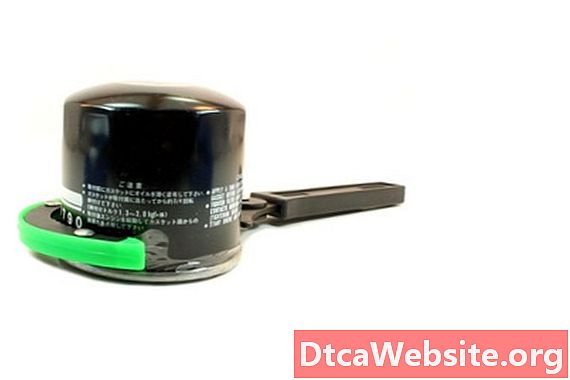
Contenu

The Taurus was one of the most modern American-built vehicles of its time when Ford released it in 1986. Throughout the years, the Taurus lost some of its steam and became the typical, yet reliable family sedan. It was not until its overhaul and rebirth of sorts in 2010 that it again became an innovative vehicle. The 2005 Taurus and its standard 153-horsepower, 3.0-liter V-6 OHV engine is no eye-popper, but it gets the job done. Replacing the spark plugs is just one of the many maintenance tasks required on the 2005 Taurus, but getting to the plugs, especially the rear ones, can be a little tricky.
Step 1
Check the gap between the electrodes on the end of all six new spark plugs, using a spark plug gap tool. The Taurus’ 3.0-liter engine requires a gap between 0.042 and 0.046 inches. Adjust any incorrectly gapped plug to specifications by widening or narrowing the gap with the spark plug gap tool.
Step 2
Find the six ignition wires, which connect to the ignition coil – mounted on the front-most valve cover – and run to the front and rear of the engine block.
Step 3
Trace the three ignition wires leading to the front of the engine and find the thick rubber boot on the engine end of each wire.
Step 4
Grip the boot on one wire and pull upward with a slight twisting motion to remove it, exposing the spark plug. Remove the spark plug, using a ratchet and spark plug socket.
Step 5
Thread a new spark plug into the engine by hand and feel for any resistance as you thread it. If you feel resistance, immediately remove the plug and thread it again. Tighten the spark plug to 11 foot-pounds, using a torque wrench and spark plug socket.
Step 6
Inspect the unplugged ignition wire for any defects, including burns, cracks, brittleness or any other signs of excessive aging. Replace all six wires one by one if any defects exist.
Step 7
Place a dab of dielectric grease inside the ignition wire’s rubber boot and spread the grease around with a small flat-head screwdriver. Line up the ignition wire boot with the top of the spark plug and press the boot onto the plug until you feel it click into place.
Step 8
Repeat steps 2 through 7 to replace the remaining two spark plugs on the frontmost side of the engine.
Step 9
Trace the three ignition wires from the ignition coil toward the rearmost side of the engine until you find the thick rubber boot on the engine end of each wire.
Follow steps 2 through 7 to replace the three spark plugs on the rearmost side of the engine. To replace the rear spark plugs, you have to position your arm under the upper intake manifold. There is little room to move in this area, and those with larger arms may find it uncomfortable. Use caution not to injure yourself removing and replacing the rear spark plugs.
Warning
- It may seem easier to use a universal joint attachment on your ratchet for the rear plugs, but do not do this. A universal joint attachment greatly increases the risk of breaking the spark plug or stripping the cylinder head. Both of these miscues will result in expensive and time-consuming repairs.
Items you will need
- Spark plug gap tool
- Ratchet
- Spark plug socket
- Torque wrench
- New ignition wire set (optional)
- Dielectric grease
- Small flat-head screwdriver


